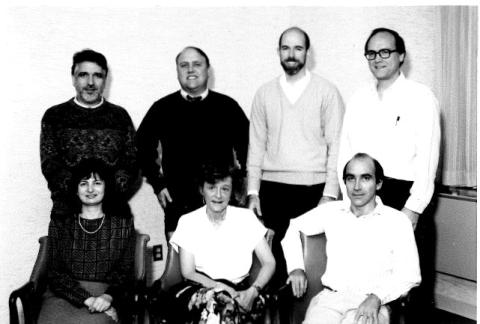NICHD Remembers Former Senior Investigator Nisula

Dr. Bruce Nisula, a longtime member of the intramural community who began his NIH career in 1971, died Aug. 30, after a long battle with cancer. He was a founding member of the former NICHD Developmental Endocrinology Branch (DEB), which he led from 1988 until his retirement in 1995.
Nisula graduated from Dartmouth College in 1966 and earned his medical degree from Harvard Medical School in 1969.
After completing his internship at Peter Brent Brigham Hospital and his residency at Children’s Hospital Center, he joined the Public Health Service. Nisula first served as a clinical associate in the Reproductive Research Branch at NICHD. In 1976, he helped create the DEB, where he continued his clinical research program until 1995.

Nisula earned an international reputation as an authority on the structure and function of glycoprotein hormones, especially human chorionic gonadotropin (hCG) and thyroid-stimulating hormone (TSH).
As a postdoctoral fellow at NlCHD, he established that the hyperthyroidism often seen in patients with choriocarcinoma is caused by hCG, which is secreted in excessive amounts.

As a senior investigator and later as chief of the section on medical endocrinology within DEB, Nisula developed methods to quantify hCG-related molecules and to distinguish them from hCG. One such metabolite, the so-called “beta-core fragment,” is particularly important because it is a marker for non-trophoblastic cancers of the reproductive system. From there, he developed an assay to detect these types of reproductive cancer in women, and the test was patented in 1995.
Nisula’s work on hCG also led to the discovery that a higher than expected percentage of pregnancies are lost close to the time of implantation, long before women realize they are pregnant. His research also showed that hCG levels contribute to fertility, which was contrary to the thinking at the time.
Nisula is also known for his contributions to the diagnosis and management of thyroid disorders, especially for developing assays for TSH. His studies on TSH have simplified the clinical diagnosis of children with central hypothyroidism—a malfunction of the pituitary gland that is often difficult to detect—as well as the diagnosis of borderline hyper- and hypothyroidism in children.
He authored or co-authored more than 130 publications.
